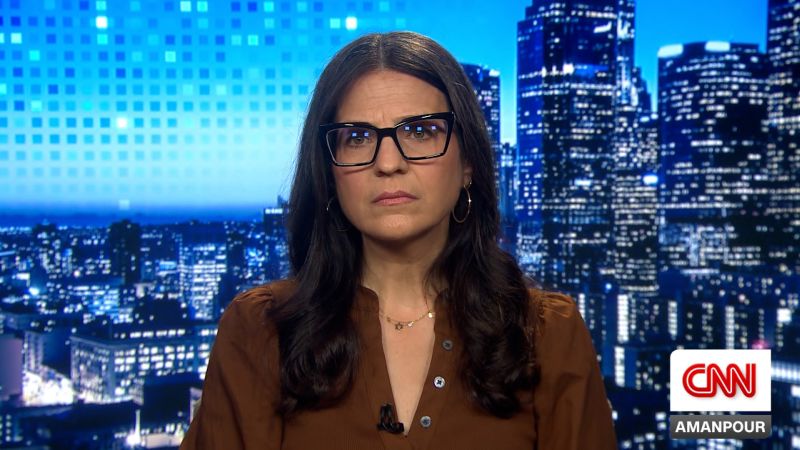Deirdre’s temperature was 104 degrees when the paramedics arrived on Saturday afternoon and started infusing ice-cold saline into her veins, racing to cool her before she became another victim of Phoenix’s merciless heat wave.
It was a record 118 degrees outside, and Deirdre had been in her wheelchair on a baking stretch of sidewalk in northwest Phoenix. When workers at a dollar store called 911, her arms were seized with heat cramps and her skin was as red as licorice.
“We’ve got to go!” a firefighter-paramedic with the Phoenix Fire Department said, as a cluster of firefighters surrounded Deirdre and lifted her onto a stretcher and into an ambulance.
This is the blistering reality of summer for rescuers in Phoenix as America’s fifth-largest city staggers through one of its longest stretches ever of 110-degree days. A brutal “heat dome” set temperature records across the Southwest this weekend, and across the country, more than 63 million people were facing dangerous levels of heat.
Extreme heat comes with the territory both for Phoenix and for its firefighters. They train by climbing stairs and swinging sledgehammers wearing up to 80 pounds of bulky, suffocating gear, and make a career of bursting into burning buildings and rushing toward explosive brush fires.
But the past two weeks of unbroken triple-digit days have put heat at the center of their work, turning them into a summertime army battling to rescue homeless people who collapse in their tents, workers who faint in the sun and vulnerable older people struggling to breathe inside sweltering homes. Many are trained paramedics, and they estimated that some 80 percent of the department’s calls are medical emergencies.
There have been 12 reported heat-related deaths in the Phoenix area through mid-June, and an additional 40 open cases where heat is being investigated as a factor, according to a tally from the Maricopa County medical examiner.
“It’s amazing how hot things get,” said Buddy DiCosmo, a captain at Fire Station 30, situated in a working-class area of small ranch homes in northwest Phoenix. “All you want to do is take a shower and cool off. But a lot of these people can’t. They’re just in it.”
The firefighters are, too.
They swelter inside layers of insulated clothing designed to keep the heat of flames from penetrating. They can feel the heat from 180-degree asphalt seeping into their boots when they respond to traffic accidents. They sweat through their thick navy T-shirts lifting people off the ground and hiking up mountain trails to rescue overheated hikers — rescue missions that two years ago sickened a dozen firefighters with heat exhaustion and dehydration.
On the hottest days, an additional engine is often dispatched to fight fires as a safeguard against the draining heat’s effects on fire crews.
“You just can’t go as long,” Captain DiCosmo said.
After a relatively mild and wet winter and spring, heat calls to the Phoenix Fire Department are higher this summer compared with last year, a department spokeswoman said. The department said it did not yet have precise figures, but a digital readout of all the active fire calls around Phoenix offered a glimpse. At 3 p.m. on Saturday, about one of every 10 calls was from someone overwhelmed by the day’s heat.
There was a dehydrated 69-year-old hiker who had to be wheeled off a trail near the cowboy-inflected town of Cave Creek. A homeless man who arrived at the hospital with a temperature of 106 degrees. People who burn themselves on the pavement, children who collapse at sports practice and, occasionally, apartment complexes that turn into ovens when an air-conditioner blows.
The call to help Deirdre came at 2:30 p.m. Two companions, who identified her for firefighters, had been wheeling her down the street said she had simply passed out in the heat, but paramedics saw telltale signs of an overdose and revived her with a dose of naloxone and took her to the hospital.
Fentanyl pills are cheap and pervasive on the streets of Phoenix, and some unsheltered people say they turn to opioids and meth to cope with the brutal conditions of living outside in the summer. Drug use was a factor in more than half of the 425 heat-related deaths recorded last year in Maricopa County, which encompasses Phoenix, the county’s health department reported.
The firefighters had not been back at the station for five minutes when another call came in: A 22-year-old man collapsed from heatstroke. They rolled out again.
There, inside a stuffy trailer at the Sun ‘n’ Sand mobile home park, they found Alex Guerrero lying on the floor of his kitchen. Like his father and older brothers, he works repairing air-conditioners, and had spent the day outside tending to the units running full-blast at an apartment complex.
He staggered home after work on Saturday and crumpled to the floor, and his family surrounded him, wetting down his neck and giving him tiny sips of a sports drink until the firefighters arrived.
The team checked Mr. Guerrero’s vital signs, took his medical history and asked him if he wanted to go to the hospital. He was feeling better, so he decided to stay home and recuperate.
The heat infiltrated other medical emergencies. An older man recuperating from knee surgery fell out of his bed and could not move, but his wife, Nancy Dorris, said she suspected the heat inside their home had made him groggy and affected his balance. Ms. Dorris said the family could not afford to set the thermostat lower than 79 degrees. Even then, the summer electricity bills run $400 a month, she said.
“Today is the worst,” she said.
As they drove away from the call, one of the firefighters piped up on the shared engine communications channel: “What do we got, another month of this heat?”
The consensus was that it would be more than that.
By 8:10 p.m., the sun was gone but the heat lingered — 110 degrees and not budging.
And another call came in: Ill person, air-conditioning broken, overheating.
They pulled up at a transitional home that serves women who have been living on the streets. Inside, the thermostat read 90 degrees, and ceiling fans were doing little but frothing up a meringue of stale humid air.
Hazel Wilkins, 68, a resident, told the firefighters the air conditioning had been acting up for a week, and had stopped working entirely a day earlier. Ms. Wilkins said she had a history of seizures and chronic lung disease, and felt woozy.
Her vital signs, however, suggested that her pulse, blood pressure and oxygen levels were stable, and the firefighters said they could do little other than take her to the hospital. Ms. Wilkins demurred, saying she did not want to draw attention away from gunshot victims or sick people.
The firefighters asked the home’s manager when the air-conditioning would be fixed. Monday at the earliest, was the answer.
“I’m fine,” the manager said, standing outside Ms. Wilkins’ bedroom.
As the firefighters packed up, Ms. Wilkins said she would try to call around for somewhere else to stay, but was resigned to taking showers to cool off. She had been trying to drink water and follow the heat-preparedness leaflet that sat on her dresser. But there was no escape.
“It’s just caught up with me,” she said.






More News
Condé Nast Employees Threaten to Walk Off Job on Eve of Met Gala
When Buying a Home Is Treated as a National Security Threat
Zendaya, Bad Bunny and a Threat of a Picket Line at the 2024 Met Gala